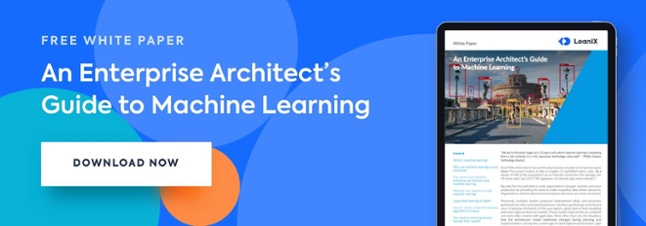
What's the connection?
At a glance:
- Artificial Intelligence (AI) can only leverage information that has first been carefully structured.
- Information Architecture (IA) can prepare enterprises and their data for AI deployment to enact accurate and strategic analytic decision-making.
- AI systems require supervision, planning, and cleansed data.
Eye-popping reports on Artificial Intelligence (AI) regularly overlook the technology’s reliance on clean, structured data sources.
The truth is that most varieties of automated and predictive services—such as the ones powering the customer “Chat bot” appearing on the bottom right of this very page—are fuelled by intelligence kept in inlays of pre-defined information structures. Neural nets, natural language processes, and machine learning all leverage algorithms connected to these meticulously classified data pools to emulate human thought patterns and produce the stuff of AI magic—or, as it is sometimes referred to, the “illusion of simplicity”.
And it’s mostly all a result of careful Information Architecture (IA).
Dining on data
Consider how behind the curtains of brilliant AI sit astounding designs that pave the way for instantaneous data retrieval. These pathways and storage units, though each initially the property of unique teams and business units, are integrated into a holistic framework by the efforts of Information Architects—the unsung heroes of AI—to create an enterprise-wide repository of knowledge to link departments and applications and just about anything else with clues into user behaviour.
But no matter the data source, IAs must first groom input channels fed to AI systems in order to spotlight worthy patterns of interest. Everything is given an attribute and a value, and while not all data points will even contribute to an overall AI analysis, knowledge across an enterprise must nonetheless be put within accessible structures to help a system draw its own conclusions.
IAs curate data according to real business needs to achieve specific, strategic solutions—and they use AI to adroitly connect the results of intelligence gathering. The below quotation from David Loshin and Charles Roe from DATAVERSITY puts this into context:
“Information is data put into action. Where a specific data element may exist on a server somewhere in one format or another, it has lesser business value until it is integrated with other data elements into an information package. Information is data with context. So where Data Architecture is necessary to contain and organize the manifold data resources into a manageable system, Information Architecture is necessary to combine those resources into a structure that allows the dissemination of that information to be captured, shared, analyzed, utilized, and governed throughout an enterprise, across all lines of business, within all departments, with confidence and reliability.” - David Loshin and Charles Roe, DATAVERSITY
So, just how does the enablement of AI with effective IA force enterprises to change their organizational structures? In what ways must a traditional business transform itself to more sensibly receive, control, and leverage treasures of enterprise content to accomplish quicker deployments of AI or machine learning-type systems?
Order, above all else
When data is curated for such specified conditions, there must be a recognizable degree of accuracy/completeness/consistency/credibility agreed-upon by diverse stakeholders in order set the table for truly beneficial AI design. Modern IA must weave through interdepartmental barriers using proper communication tools and intuitive interfaces to establish standards. Failing to do so will choke AI efforts and bring about flawed analytics and self-fulfilling prophecies.
AI is indeed the future, but it is also neither the saviour nor the unscrupled job-killer of debates. It is just another application of an enterprise requiring order. And like any other business asset, if mismanaged with poor organizational techniques, it will ever-so-steadily fail.
For best practices on how to create the conditions necessary for AI and Machine Learning in your enterprise, read the below handbook:
![Best Practices to Define Data Objects [Poster]: Learn best practices on how to model data objects and achieve your data map quickly! »](https://no-cache.hubspot.com/cta/default/2570476/cc72efa8-776f-4cde-bf88-7644c84c06b4.png)



